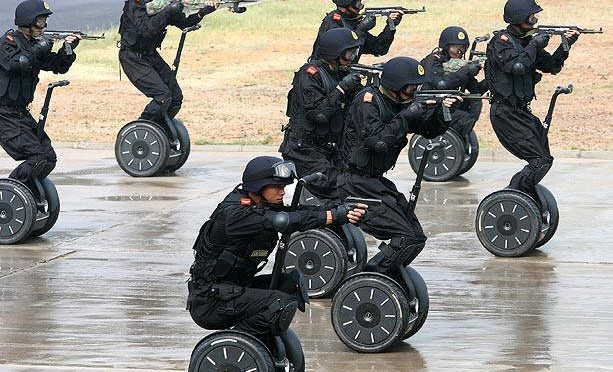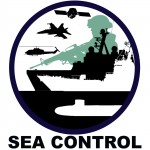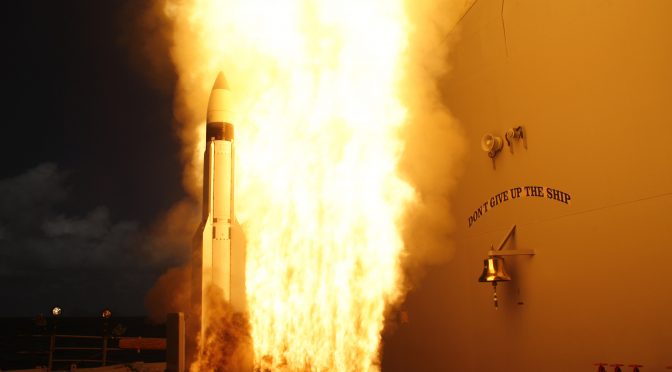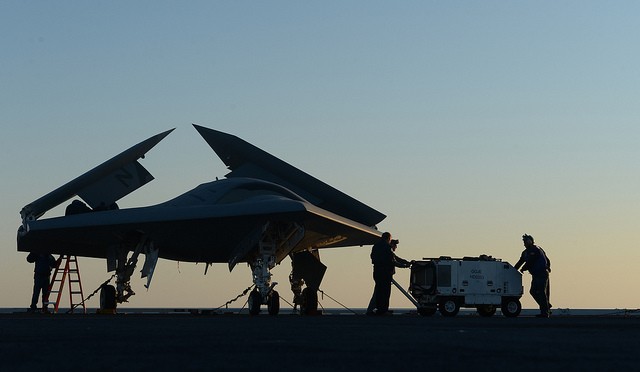Since the development of the U.S. Department of Defense’s Air Sea Battle concept (ASB) became public knowledge, discussion of its merits has proliferated faster than you can say “multi-axis saturation attack by advanced precision-guided munitions.” (That’s still reasonably fast, I promise.) Many analysts have debated ASB’s implications for alliance politics, U.S. strategy, force structure, and crisis stability, among other topics. Several have proposed well-reasoned alternative concepts intended to address ASB’s limitations. Few, however, have asked whether or not ASB is likely to work at the operational level of war.
One tool available for addressing this question is military and naval theory. Though prominent in the debate surrounding doctrinal changes that led to AirLand Battle in the 1980s, theory has recently taken a back seat in discussion of Air Sea Battle. [1] Placing ASB in context in the realm of military thought enables us to examine the concept’s underlying logic. Theory isolates the key mechanisms of victory or defeat out of the mass of detail to be found in the history of warfare. In doing so, it provides a guide for how—not what—to think when developing operational concepts for application to specific present and future scenarios.
Good theory, grounded in history, is a point of reference. Where an operational concept or its key assumptions deviate from theory, developers should look to specific technological and tactical circumstances of the case to determine whether these deviations are appropriate. This permits informed decisions about departures made from what naval historian Julian S. Corbett termed the “beaten track” of successful precedent.
For example, any operational concept predicated on “dominant battlespace knowledge,” rather than Clausewitzian fog and friction, would receive special scrutiny from a theoretical perspective. Similarly, theory would cast doubt on concepts like Effects-Based Operations, which assume—contrary to historical evidence—that political will can be directly targeted by kinetic effects. In both cases, the validity of the concept would depend not whether it agreed with theory but on whether the unprecedented capabilities or causal relationships the concept required could be realized.
Two paradigms in military theory are attrition and maneuver. Like the wave and particle models of electromagnetic radiation, the applicability of each to a given situation depends on context. The context for ASB is the (re-)appearance of the anti-access/ area-denial (A2/AD) network (nee reconnaissance-strike complex) composed of a variety of weapons and sensors distributed over a wide geographic area, and linked together for mutual support. Specifically, ASB is intended to serve as a general guide to how a strike campaign against such an A2/AD network would be best conducted in order to secure U.S. maritime forces freedom to operate in the context of war.
Published accounts of ASB suggest the concept is all about attrition. That’s a good thing. This line of thinking emphasizes things that matter in maritime wars: minimizing operational risk and ensuring favorable combat-loss exchange ratios.
Open-source assessments of the capability of potential adversaries suggest that high-risk approaches associated with maneuver theory would be prohibitively costly. That ASB eschews this type of risk is grounds for confidence in the path the concept’s development is taking.
Attrition vs. Maneuver
Maneuver theory sees victory as the result of destroying the enemy’s cohesion. In this view, making decisions faster than the enemy allows friendly forces to seize and hold the initiative. Maneuver theory posits enemy dispositions composed of distinguishable strong and weak points. Separated from one another by time and space, these represent potential “non-cooperative centers of gravity.” Exploiting these weaknesses depends on “reconnaissance pull,” or the direction of attacks by organic reconnaissance assets, rather than higher command. Rapid, unpredictable attacks against enemy vulnerabilities produces psychological and organizational collapse, preventing effective cooperation between segments of the enemy force. [2]
In contrast, attrition theory prescribes victory through the cumulative destruction of the enemy’s material strength. For attritionists, battle can further at least one of two ends—physically destroying the enemy’s fighting power, and breaking his will to resist. This school of thought emphasizes that one’s own military strength and political will are also at risk in battle. This produces a tactical focus, or a search for methods to maximize the adversary’s losses while minimizing one’s own.
Where maneuver looks to dispersion of forces to confuse and disorient the enemy, attrition tends to favor concentration for effectiveness. This view is reflected in the logic of the Lanchester Square Law: the more firepower massed against the enemy, the faster and cheaper the victory.
At the heart of ASB is the “Networked, Integrated, Attack-In-Depth” to “Disrupt, Destroy, and Defeat” (NIA-D3) enemy A2/AD networks. NIA-D3 aims to win the “salvo competition” by attacking both the sensor and shooter components of A2/AD networks, reducing their effectiveness. On land, NIA-D3 targets integrated air defense systems (IADS), theater ballistic missile sites, command and control nodes, and long-range sensors. At sea, anti-submarine and anti-surface warfare efforts would destroy cruise missile-armed surface ships and submarines. In the air, tactical aircraft—initially operating from distant bases and aircraft carriers at standoff distance—would attack long-range airborne intelligence, surveillance and reconnaissance (ISR) platforms as well as enemy fighters and bombers.
What all these provisions have in common is a focus on maximizing tactical advantage in every battle, and ensuring U.S. forces take much less punishment than they deal out over an extended period of time. Although CSBA’s report identifies certain high-value targets—especially over-the-horizon targeting radar sites and command centers—neither the DoD or CSBA accounts of ASB envision causing the systemic collapse of a robust A2/AD network. ASB envisions the defeat of enemy A2/AD networks through cumulative erosion of their capabilities, not causing their sudden collapse by attacking their cohesion.
Theory Meets Reality
Maneuver theory appears a poor guide to addressing A2/AD challenges. There are two reasons a maneuver-style campaign would be a poor choice. First, reconnaissance-strike complexes do not share the same vulnerabilities as adversaries organized along the lines of 20th-century conventional forces. Second, the decentralized command and control system required by maneuver theory would be unable to cope with the scale and interconnectedness of an advanced A2/AD network.
Central to maneuver theory is the proposition that rapid attacks against isolated points of weakness can disorient the enemy, causing the fragmentation and systemic breakdown of the ability to resist or counterattack. This assumption appears inapplicable to a sophisticated reconnaissance-strike complex like that visualized in open-source accounts of ASB.
The imperative of decision speed requires the decentralization of command authority through “mission-type” or “objective” orders. Maneuver advocates admit that this “inherently results in diffuse operations.” [3]
First, the inherent and self-imposed ISR limits of maneuver forces will require them to accept greater losses in searching for appropriate targets. Second, capable adversaries will concentrate defenses around key A2/AD network nodes. Third, the nature of a theater-sized reconnaissance-strike complex—a network characterized by the mutual support and redundancy of many components–suggests that its wholesale collapse would be difficult to achieve.
Decentralized control is integral to maneuver concepts, which require tactical commanders to discover enemy weaknesses by reconnaissance pull. The limited view provided by tactical ISR, however, will be insufficient for attacks on dispersed reconnaissance-strike complexes. Tactical ISR platforms would soon become priority targets for a capable adversary defending itself against a maneuver-style operation. Only higher echelons seem likely to have the resources to form and support the comprehensive “picture” of a theater-sized battlespace. Given the complexity and dispersal of integrated air defense systems (IADS), among other high-value military targets, such a picture seems necessary for adequate battle damage assessment.
In searching for weakness, a maneuver-inspired operational concept would run into strength. As amply demonstrated in the course of Operations ALLIED FORCE and DESERT STORM, IADS components and missile launchers can exploit terrain, mobility, and controlled emissions, making such searches time-consuming. [4] To minimize the risk advanced surface-to-air and anti-ship cruise missiles pose to the tactical aircraft and surface combatants that shoulder much of the strike mission, the time available for future Scud Hunts will be necessarily reduced.
Against continental adversaries with the ability to exploit buried fiber-optic communications, generating “non-cooperative centers of gravity” seems a tall order. It seems likely that capable adversaries will guard key nodes in reconnaissance-strike complexes—long-range sensors and C2 sites—reducing the possibility that surprise could compensate for dispersion in securing a favorable outcome in a given engagement.
Battle networks are designed for mutual support between their component systems. One example is the typical integrated air defense system (IADS). In such systems, the vulnerabilities of long-range tracking radar to low-altitude threats are mitigated by short-range radar and anti-air artillery systems placed to guard against such approaches.
So if ASB is an attrition concept, and an attrition mindset is the right one to deal with A2/AD challenges, is ASB in keeping with the precedent of previously successful attrition campaigns? While no definitive answer is possible, there are reasons for confidence on this score. Successful attrition campaigns of the past, such as U.S. Army GEN Matthew Ridgway’s “limited objective attacks” in the Korean War, have consistently maintained a focus on minimizing losses as the best way to deliver the maximum damage over time.[5]
In naval warfare, purely tactical advantages—tactical surprise and the concentration of firepower— have produced favorable loss-exchange ratios. [6] The cumulative destruction of Imperial Japan’s fleet played a central role in inducing that country’s surrender. It did so through the effects of defeat on Japan’s national leadership as well as indirectly through permitting the capture of the Marianas as forward air bases for a strategic bombing campaign. [7]
For generations of military leaders and analysts reared on tales of World War I’s Western Front and U.S. Army GEN William Westmoreland’s search-and-destroy operations in Vietnam, “attrition” may be something of a dirty word. Yet it appears an attrition mindset—that appearing in ASB—is the right one for tackling advanced A2/AD networks.
Critics argue that ASB is not a useful concept because it emphasizes the erosion of the enemy’s conventional forces and largely ignores questions of escalation and political will. [8]
Yet—unfashionable though it might be to say—killing people and breaking stuff can pay political dividends. The increased cost and length of time required to acquire major platforms and weapons systems suggests their importance as a source of strategic leverage has also grown. If potential adversaries cannot fight a conventional conflict without confronting the likelihood of losing, rather than gaining, military strength relative to the United States and its allies, a potential threat to stability will recede. ASB may yet play a role in bringing about this favorable scenario.
ENS Adam Humayun is a graduate of The George Washington University’s Elliott School of International Affairs and has completed coursework at Georgetown University’s Security Studies Program. The views and opinions expressed in this article are the author’s alone and do not represent those of the U.S. Navy, the Department of Defense, or the U.S. Government.
[1] Edward N. Luttwak, “The Operational Level of War,” International Security vol. 5 no. 3 (Winter 1980-1981): 61-79; Edward N. Luttwak, “Attrition, Relational Maneuver, and the Military Balance,” International Security vol. 8 no. 2 (Autumn 1983): 176-179; John J. Mearsheimer, “Maneuver, Mobile Defense, and the NATO Central Front,” International Security vol. 6 no. 3 (Winter 1981-1982): 104-122.
[2] William S. Lind, Maneuver Warfare Handbook (Boulder, CO: Westview Press, 1985 (5-6). See also Boyd’s Patterns of Conflict presentation (hyperlinked in paragraph).
[3] Robert R. Leonhard, “Maneuver Warfare and the U.S. Army,” in Richard D. Hooker, ed. Maneuver Warfare: An Anthology (Novato, CA: Presidio Press, 1993), 42-56 (45).
[4] Arend G. Westra, “Radar Versus Stealth: Passive Radar and the Future of U.S. Military Power,” Joint Force Quarterly no. 55 (October 2009): 136-143; Benjamin S. Lambeth, “Reflections on the Balkan Air Wars,” Air Power History, Spring 2010: 31-43.
[5] Carter Malkasian, “Towards a Better Understanding of Attrition: The Korean and Vietnam Wars,” Journal of Military History vol. 68 no. 3: 911-942 (918-928, 939).
[6] Wayne P. Hughes, Jr. Fleet Tactics and Coastal Combat (Annapolis, MD: Naval Institute Press, 2000) 40-44, 193-202.
[7] Robert A. Pape, “Why Japan Surrendered,” International Security vol. 18 no. 2 (Fall 1993): 154-201.
[8] See among others Thomas P.M. Barnett, “Big-War Thinking in a Small-War Era: The Rise of the Air-Sea Battle Concept,” China Security vol. 6 no. 3 (8-9).



 Alex Clarke hosts Sea Control’s East Atlantic Edition from Phoenix Think Tank. He discusses Naval Escorts with CDR Paul Fisher (RN, Ret) and CIMSEC associate editor Chris Stockdale.
Alex Clarke hosts Sea Control’s East Atlantic Edition from Phoenix Think Tank. He discusses Naval Escorts with CDR Paul Fisher (RN, Ret) and CIMSEC associate editor Chris Stockdale.
